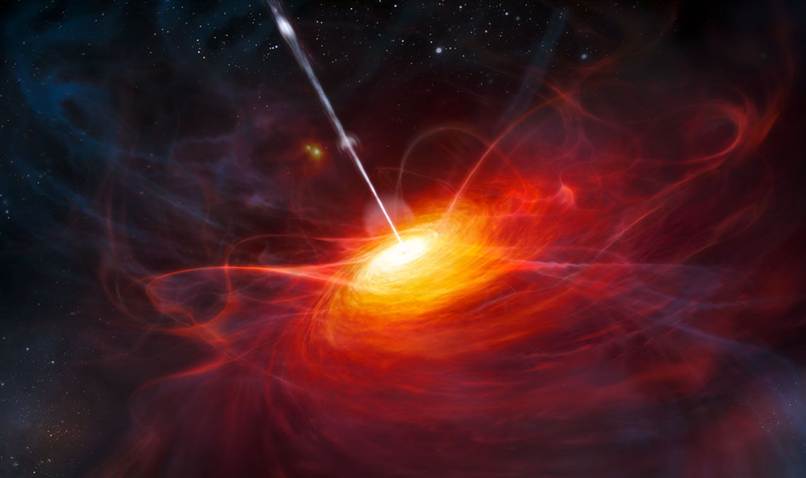Scientists Locate Ancient Galaxy, Here’s Where It’s Hiding

While the James Webb Space Telescope gets all of the attention nowadays, the reliable old Hubble Space Telescope is still contributing plenty to the world of science and astronomy. Most recently, scientists were able to discover an 11-billion-year-old galaxy that was hidden in the glare of a quasar. According to Space.com, scientists will often search for reddening quasars to detect nearby absorbing galaxies, which is the tactic that they used in this case.
Scientists recently discovered an ancient galaxy that was hiding in the glare of a quasar.
Of course, just finding a reddening quasar doesn’t mean that observers will automatically be able to look nearby and find a galaxy. The process is quite a bit more complicated than that. As Space.com explains, scientists will typically observe galaxies by looking at the light emitted from the stars in those galaxies — however, it can be more difficult to find these galaxies if there is a brighter, more powerful light source along the same line of sight.
Quasars are exceedingly bright, and their light is typically enough to block all of the light output from a galaxy in the foreground due to its immense glare.
So, observers need to take a different approach that involves looking at gaps in the output of the brighter, distant galaxy that may have been absorbed by aspects of the galaxy in the foreground. In particular, quasars are a common background light source that scientists will sometimes observe to find these hidden galaxies in the gaps.
As Johan Fynbo, an astronomer at the Cosmic Dawn Center, explains, quasars that are reddened typically display that color because of the potential gas and dust from a galaxy that might be in the foreground of that object.
Quasars are exceedingly bright, and their light is typically enough to block all of the light output from a galaxy in the foreground due to its immense glare. So, an absorbing galaxy with a light output that would otherwise be easily observable becomes completely engulfed in this light, making it extremely difficult for astronomers to see it through typical observational means.

Of course, observing these galaxies isn’t impossible; it just makes finding them harder, which is why things like this 11-billion-year-old galaxy can stay hidden for so long from our typical sweeps of the universe.
Further observations reveal that the quasar-hidden galaxy also seems to have a gravitationally bound, brighter galactic counterpart.
Even when we find the galaxy, the quasars mess with the equation because the scientists still have yet to officially identify the light that is coming from the recently uncovered galaxy. The absorption patterns observed so far have revealed some interesting details, such as the fact that the galaxy is likely a very mature galaxy akin to our own Milky Way.
This conclusion was made based on the fact the galaxy is absorbing more light than other galaxies we have uncovered through these observations, showing that it likely has been a galaxy that has been around for quite some time.
Further observations reveal that the quasar-hidden galaxy also seems to have a gravitationally bound, brighter galactic counterpart. This observation is based on the fact that the galaxy that is pumping out new stars at a high rate is incredibly close to the observer galaxy, meaning these two are likely in a local galaxy group.
Hopefully, we learn more about this local group, as the researchers intend to explore the region more with the Nordic Optical Telescope at La Palma and other instruments in the near future.












